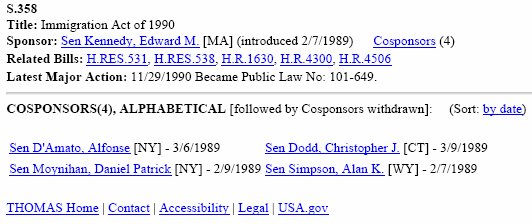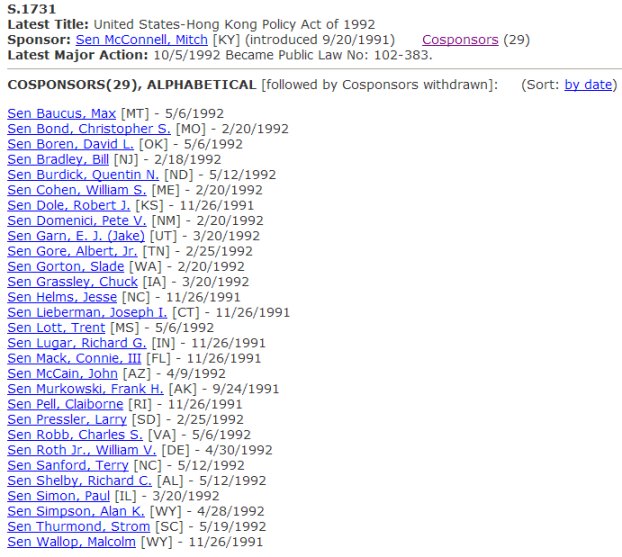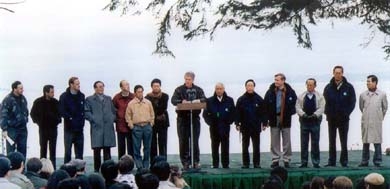Idaho - FTZ Update
Chinese company eyes Boise
http://www.idahostatesman.com/2010/12/31/1472023/chinese-company-eyes-boise.html
Foreign Trade Zones, Inland Ports and
Trojan Triangles
http://www.channelingreality.com/Idx_trojan_triangles.htm
Yesterday, I saw an article about a new "airline" starting service in Idaho Falls.
http://www.localnews8.com/print/27590629/detail.html
By Marissa Bodnar
POSTED: 5:23 pm MDT April 18, 2011
UPDATED: 6:12 pm MDT April 18, 2011
Significant excerpts:
IDAHO FALLS, Idaho -- There was good news on Monday for anyone fed up with the four-hour drive to Boise.A Pacific northwest airline carrier is interested in relaunching nonstop flights from Idaho Falls to Boise as early as this summer.
Seaport Airlines President Rob McKinney said it's still early in the process, but it would likely offer four round trips a day, six days a week.
In the setup article that was printed
in July 2010, the reporter wrote:
http://www.localnews8.com/news/24442478/detail.html
Anyone who flies to Boise or makes a connecting flight through it will be affected, that's about 25,000 passengers a year...
While there are nearly 200,000 airline passengers from the region that fly every year, more than 40 percent of them travel to another airport.
Since that's home turf for me, the misrepresentations are obvious. First... 25,000 passengers per year flying out of Boise to connect - wrong.
- People drive to Salt Lake City from Idaho Falls - not Boise. The reason is because SLC is about a 3 hour drive drive and Boise is about a 4 hour drive and there are more options for flights out of SLC.
- Next, Idaho Falls has a population of barely 50,000 people. The population of the surrounding towns - if you go out 100 miles in all directions is probably 100,000 thousand people - but one of those towns, Pocatello has a population of about 45,000 of that 100,000 and they are 40 miles closer to SLC and Boise - in fact, they are at the crossroads for the decision for direction and they have their own airport because they are a college town and for years and years, they were bigger than Idaho Falls.
- Third, most people who fly out of Idaho Falls are people who work for INEL, or government people associated with INEL. Some of them might have a Boise destination but probably not the majority of them. The price of tickets out of Idaho Falls were always very expensive because the government (and government contractor - INEL) comprised most of the flying passengers so even local government people going to Boise would be more likely to drive because of the cost.
Anyway... enough of that. It's BS and that's that. There is not enough normal flight traffic between Idaho Falls and Boise to justify a new - even though small air carrier, for 4 round trips a day, 6 days a week. That's absurd. In fact, it is "rolling on the floor, laughing my ass off" absurd. But it's only the article that is funny. What they are doing is not funny. They are setting up a transportation system for people coming from China and they are doing it surreptitiously. Idaho State University is forty miles down the road. The modus operandi for importing the revolution is under the cover of foreign "students" - an unlimited number of foreign students.
What came to mind was, gee... I wonder if that's what that guy, David Koresh was involved in at the compound at Waco. He was living near a small airport and he had over a hundred people there - a lot of them were British subjects. Hmmm. That made me think of the Venice Airport in Florida and Wally Hilliard training pilots from the Middle East to fly small airplanes. I see a pattern: Foreign Trade Zones, airports with Customs and Border Protection officers and international flights, connections to small airports with unusual volumes of activity and the U.S. government selling American citizenship for $500k to $1 million a pop - and the moral hazard for the hard-working civil servants making peanuts who are charged with the responsibility for carrying out the policy - covertly so as not to alert the American people that their government was selling them out.
For whatever reason, I remembered Britain's problem with British citizenship being given to the quislings that managed the colonies for them. It wasn't a problem until they had to turn Hong Kong back to the Chinese government in 1997.
Sino-British Joint Declaration
1. On 26 September 1984 representatives
of the Governments of the United Kingdom and of the People's Republic of
China initialled the draft text of an agreement on the future of Hong
Kong. The agreement, contained in the second part of this White Paper,
consists of a Joint Declaration and three Annexes. There is an
associated Exchange of Memoranda. These documents are the outcome of two
years of negotiations between the two Governments, undertaken with the
common aim of maintaining the stability and prosperity of Hong Kong.
2. The purpose of this White Paper is to explain the background to the
last two years' negotiations and their course, and to present the
documents in their proper context. The text of this White Paper is also
being published in Hong Kong by the Hong Kong Government, and the people
of Hong Kong are being invited to comment on the overall acceptability
of the arrangements which it describes. Thereafter the matter will be
debated in Parliament.
History
3. During the nineteenth century Britain concluded three treaties with
the then Chinese Government relating to Hong Kong: the Treaty of
Nanking, signed in 1842 and ratified in 1843 under which Hong Kong
Island was ceded in perpetuity; the Convention of Peking in 1860 under
which the southern part of the Kowloon peninsula and Stonecutters Island
were ceded in perpetuity; the Convention of 1898 under which the New
Territories (comprising 92 per cent of the total land area of the
territory) were leased to Britain for 99 years from 1 July 1898. It was
the fact that the New Territories are subject to a lease with a fixed
expiry date which lay behind the decision by Her Majesty's Government to
seek to enter negotiations with the Government of the People's Republic
of China (referred to hereafter as "the Chinese Government") on Hong
Kong's future.
4. The Chinese Government has consistently taken the view that the whole
of Hong Kong is Chinese territory. Its position for many years was that
the question of Hong Kong came into the category of unequal treaties
left over from history; that it should be settled peacefully through
negotiations when conditions were ripe; and that pending a settlement
the status quo should be maintained. The Chinese Government made its
view of Hong Kong's status clear in a letter to the Chairman of the
United Nations Special Committee on the Situation with regard to the
Implementation of the Declaration on the Granting of Independence to
Colonial Countries and Peoples in March 1972. This maintained that the
settlement of the question of Hong Kong was a matter of China's
sovereign right and that consequently Hong Kong should not be included
in the list of colonial territories covered by the Declaration on the
Granting of Independence to Colonial Countries and Peoples.
I remember the handwringing about what Britain was going to do because of their promise - because they just didn't have enough space on their little island for all the people who had British citizenship who wanted to bail out of Hong Kong before the turnover which occurred on June 30, 1997:
At midnight on June 30, 1997, the United Kingdom's Union Jack will be lowered and the flag of the People's Republic of China will be rised over Hong Kong, marking the end of a century and a half of British rule.
1990 was the year that Edward Kennedy sponsored the Immigration Act of 1990 and George Herbert Walker Bush, then President Bush signed it.

The 1990 legislation is the one that authorized the EB-5 visa to sell American citizenship.
Probably because Britain couldn't make good on their promise of residency for all British subjects in their former colonies - and especially from Hong Kong, when COMMUNIST China didn't seem to be following through to honor the agreement to support "one country, two systems", the U.S. stepped in to help. At least that's the implication of this Los Angeles Times article from 1992:
Hong Kong's Future, November 4, 1992
A 1997 article by Robert A. Manning on the Progressive Policy Institute explains a lot:
Hong Kong, a mere 420 square miles in
size, also carries enormous economic weight. It is the eighth largest
trading economy in the world (and 13th largest U.S. trading partner),
with a GNP one-fifth the size of China's. It has been called a bridge
between East and West and China's window to the world--and not without
cause. Hong Kong is a leading commercial and financial center of the
world's most economically dynamic region. It boasts one of the world's
largest stock markets, holding $63 billion in foreign exchange reserves,
and serving as regional headquarters for 85 of the world's top 100
banks. 2 It is also a telecommunications, media, and technology hub for
Asia with over 700 newspapers and periodicals based there. Clearly, it
is a vital artery in the global economic system.
Moreover, Hong Kong has been vital to China's economic takeoff, from
which it has benefitted handsomely, while transforming itself from a
manufacturing center into a service and financial hub. Roughly 60
percent of all foreign direct investment in China comes from Hong
Kong--about $100 billion--and approximately $40 billion in stock of
Chinese-backed firms. Eight of every 10 Hong Kong manufacturers operate
in China, employing over five million mainland workers, most in
neighboring Guangdong province. Hong Kong is also a major transhipment
point: 42 percent of U.S. goods exported to China and 60 percent of
China's exports to the United States (in 1995) passed through Hong Kong.
3 Over the past decade or so, a symbiotic relationship has taken shape.
Some 1,800 mainland firms are officially registered in Hong Kong with
assets worth over $42 billion. Chinese investments are growing at 25
percent a year, with 70 Chinese state-controlled companies, so-called
"Red Chips," already listed on the Heng Seng index, Hong Kong's stock
market. 4
For the United States, Hong Kong is not merely an entry point into
China, but a nerve center for the American business presence in the
entire Asia-Pacific region and a paradigm of a free market with its 15
percent flat tax, minimal regulation, and entrepreneurial genius. There
are more American residents in Hong Kong (37,000) than British (22,000).
More than 1,100 U.S. companies operate in Hong Kong, with 426 basing
their regional headquarters in the territory. American firms have
invested some $14 billion in Hong Kong and employ 250,000 workers, about
10 percent of its workforce. Nine U.S. states have offices in Hong Kong,
more than 80 U.S. universities have alumni associations there, and last
year 14,000 Hong Kong students were studying in the United States. In
addition, Hong Kong is an important port of call for the U.S. Navy,
which has averaged about 70 stops a year.
...The challenge to U.S. policy is to understand the limits and possibilities of American influence and to choose our issues carefully. The following are offered as guidelines for U.S. policy:
....Congress should avoid micromanaging policy which is likely to be counter-productive. The 1992 U.S.-Hong Kong Policy Act provides an adequate framework for monitoring China's takeover, equipping the President with the tools to respond with proportionate penalties to the extent that Chinese behavior violates One Country, Two Systems as codified in the Basic Law. The peculiar nature of the Hong Kong issue limits the degree and type of U.S. involvement likely to be effective.
The 1992 U.S.-Hong Kong Policy Act sponsored by Senator Mitch McConnell (married to Chairman Chao (Elaine):

To set forth the policy of the United States with respect to Hong Kong, and for other purposes.
Be it enacted by the Senate and House of Representatives of the United States of America in Congress assembled,
The Congress makes the following findings and declarations:
(1) The Congress recognizes that under the 1984 Sino-British Joint Declaration:
(A) The People's Republic of China and the United Kingdom of Great Britain and Northern Ireland have agreed that the People's Republic of China will resume the exercise of sovereignty over Hong Kong on July 1, 1997. Until that time, the United Kingdom will be responsible for the administration of Hong Kong.
(B) The Hong Kong Special Administrative Region of the People's Republic of China, beginning on July 1, 1997, will continue to enjoy a high degree of autonomy on all matters other than defense and foreign affairs.
(C) There is provision for implementation of a `one country, two systems' policy, under which Hong Kong will retain its current lifestyle and legal, social, and economic systems until at least the year 2047.
(D) The legislature of the Hong Kong Special Administrative Region will be constituted by elections, and the provisions of the International Covenant on Civil and Political Rights and the International Covenant on Economic, Social and Cultural Rights, as applied to Hong Kong, shall remain in force.
(E) Provision is made for the continuation in force of agreements implemented as of June 30, 1997, and for the ability of the Hong Kong Special Administrative Region to conclude new agreements either on its own or with the assistance of the Government of the People's Republic of China.
TITLE I--POLICY
SEC. 101. BILATERAL TIES BETWEEN THE UNITED STATES AND HONG KONG.
It is the sense of the Congress that the following, which are based in part on the relevant provisions of the Joint Declaration, should be the policy of the United States with respect to its bilateral relationship with Hong Kong:
(1) The United States should play an active role, before, on, and after July 1, 1997, in maintaining Hong Kong's confidence and prosperity, Hong Kong's role as an international financial center, and the mutually beneficial ties between the people of the United States and the people of Hong Kong.
(2) The United States should actively seek to establish and expand direct bilateral ties and agreements with Hong Kong in economic, trade, financial, monetary, aviation, shipping, communications, tourism, cultural, sport, and other appropriate areas.
(3) The United States should seek to maintain, after June 30, 1997, the United States consulate-general in Hong Kong, together with other official and semi-official organizations, such as the United States Information Agency American Library.
(4) The United States should invite Hong Kong to maintain, after June 30, 1997, its official and semi-official missions in the United States, such as the Hong Kong Economic &Trade Office, the Office of the Hong Kong Trade Development Council, and the Hong Kong Tourist Association. The United States should invite Hong Kong to open and maintain other official or semi-official missions to represent Hong Kong in those areas in which Hong Kong is entitled to maintain relations on its own, including economic, trade, financial, monetary, aviation, shipping, communications, tourism, cultural, and sport areas.
SEC. 102. PARTICIPATION IN MULTILATERAL ORGANIZATIONS, RIGHTS UNDER INTERNATIONAL AGREEMENTS, AND TRADE STATUS.
It is the sense of the Congress that the following, which are based in part on the relevant provisions of the Joint Declaration, should be the policy of the United States with respect to Hong Kong after June 30, 1997:
(1) The United States should support Hong Kong's participation in all appropriate multilateral conferences, agreements, and organizations in which Hong Kong is eligible to participate.
(2) The United States should continue to fulfill its obligations to Hong Kong under international agreements, so long as Hong Kong reciprocates, regardless of whether the People's Republic of China is a party to the particular international agreement, unless and until such obligations are modified or terminated in accordance with law.
(3) The United States should respect Hong Kong's status as a separate customs territory, and as a contracting party to the General Agreement on Tariffs and Trade, whether or not the People's Republic of China participates in the latter organization.
I suspect that the above might also explain Black Monday, 1987. The market makers simply stopped making the market. The FED finally stepped in, Treasury Secretary Nicolas Brady formed a Commission - Brady Commission, the result was the FED Open Market Committee and CFIUS was established, then Treasury Secretary Nicolas Brady left government service and went over to Asia to head up the Asian Development Bank.
In 1989, President George H.W. Bush sent Robert Zoellick to represent the U.S. at the meeting in Canberra, Australia to form the Asia-Pacific Economic Cooperation organization.
The 1993 Blake Island meeting.... and the Communist Chinese setting up shop in Seattle, Washington.

1993 Blake
Island Leaders Declaration
1994 APEC Economic Leaders' Declaration of Common Resolve, Bogor, Indonesia
Oh... and this... for service to the queen:
December 1, 1993, George Herbert Walker Bush was knighted by the queen.
Vicky Davis
April 19, 2011